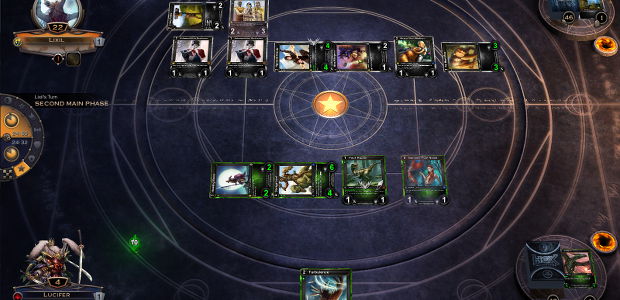

The control core pairs nicely with the attack action-based midgame, the fuse lockouts could do with the consistency of a Command and Conquer, and a hard control deck that can sideboard into a tempo fuse deck on a whim could be a great way to diversify the lines of play available to you. Each of her popular playstyles is a viable way to build the deck, and any blending of them can work as well. One way or another, Iyslander is fun to play, and frighteningly powerful in the right hands.

The impact of these plays seems low, but few decks can claim to be able to always strip a card with nothing but blues. If they do, then you arsenal your last card. If your opponent does not block Aethervein, then you draw a blue and Coronet Peak steals the card guaranteed. The backup to the backup, then, becomes Coronet Peak, which shines the most when paired with Kraken's Aethervein, especially on a 2-blue hand with no arsenal. These cards are your backups for when keeping 3 cards for the attack action and Aethervein plan doesn’t line up, allowing to strip a card and arsenal an impactful ice card to prepare for the next turn. Without Waning Moon, the curve of this deck ends up looking a little different, leaving behind Sigil of Permafrost and Isenhowl Weathervane in favour of zero-costs like Icebind and Encase that force the same lose-lose decisions as your attack actions when paired with Kraken’s Aethervein. In addition, the damage that they do choose to take is far more valuable to a Wizard than any other opponent, as every point they take is a point closer to a spontaneous instant-speed lethal. with attacks– gives your opponent a chance to commit more cards to the block.


One of the downfalls of Wizards in general is that the number of cards you can strip from your opponent is limited by how Arcane Barrier works, meaning most of the time a card can only trade for one card from your opponent. Ideally the real legwork gets done by Icevein- hence the 9 copies- and Insidious Chill, with Amulet of Ice as a backup in case you need to steal more cards to ensure your opponent skips their turn.Īnother benefit of running attack actions is that it gives your opponent an excuse to commit cards. Anything that forces your opponent to discard a card is at a premium. These kinds of plays are frequently strong enough to force your opponent to skip their turn, and open up a unique luxury for Iyslander: the freedom to arsenal a red.Īlongside Isenhowl Weathervane, the real key cards to this kind of playstyle are Insidious Chill, Amulet of Ice and Aether Icevein. The pattern of play you're looking for is pitching blue to use Isenhowl Weathervane, then playing a fused zero-cost card to generate the Frostbites on top of its own effect, and using the two floating for Waning Moon- putting the Ice card you fused with into arsenal. It allows us to use all our resources extremely efficiently with the inclusion of some zero-cost fuse cards like Encase and red Icebind. The card that really drew me to this idea was Isenhowl Weathervane- particularly how it fit in with the pitch curve of the deck.


 0 kommentar(er)
0 kommentar(er)
